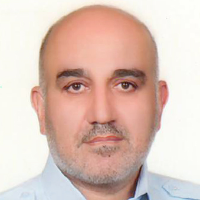Application of fractal modeling for processing and analysis of geoelectrical components in the Kushk-e-Bahram copper deposit (Central Iran)
The Kushk-e-Bahram Manto type copper deposit is located in the central Iran zone and is Uremia-Dokhtar Magmatic Arc (UDMA) belt which includes copper porphyry deposits and related mineralization types, including the Manto type copper deposits (Jebeli et al., 2018a, b). Based on the type of mineralization and the presence of sulfides, high electrical conductivity (low electrical resistivity) can be detect in this deposit such as the Manto type deposits (Mehrnia, 2013., Mehrnia, 2016., Teymoorian Motlagh et al., 2012). On the other hand, Induced Polarization (IP) and electrical resistivity (RS) were used in the Kushk-e-Bahram deposit.
The relationship between geoelectrical parameters and the mineralization process were recognized in geophysical assessments of the Kushk-e-Bahram de posit. It is necessary to obtain information about the shape and distribution of the orebody. According to exploratory data of the Kushk-e-Bahram deposit (Jebeli et al., 2018a, b), Cu mineralization has been extended. Therefore, the location and number of geoelectrical profiles were selected, based on previous studies which was generated in the ArcGIS software. The exchanges in the RS and IP values were measured, along three profiles (P1, P2, P3) and Dipole-Dipole arrangement with electrode distance of 10 meters. The device type used is WDJD-3 and 1620 harvest points were surveyed. IP–RS profiles with azimuth 30 to 40 degrees were used in order to identify mineralization areas based on the highest variability of conductivity and load-bearing properties. Moreover, they were designed and surveyed perpendicular to the mineralization process of the area. Considerations were taken into account based on the location of trenches and the mineralization sequence of this area. The P1 and P2 profiles with an approximate length of one kilometer and P3 profile with an approximate length of 370 m were designed and harvested under a 30 degree azimuth.
In this research study, a number of geoelectrical sections were selected and their surface changes in a two-dimensional environment were refined and internalized by the algorithm used in the diffraction-distance distribution function. According to the position of P1 and P2 profiles, all three quantities of RS, IP and self-Potential have been interpolated to match the alteration zones and faults of the study area in the P3. The quantity of Spontaneous Potential (SP) is not measured and it just suffices to internalize specific electrical changes and IP and their conformity with the effects of alteration and faults in the region. Interpolation of geo-electrical data by the inverse distance weighting estimation method and nearest neighborhood algorithms were carried out (Mehrnia, 2016; Teymoorian Motlagh et al., 2012).Based on the fractal dimension, four targets around the P1 and P2 profiles and eight priorities have been identified around the P3 profile. Based on the results, geo-electrical data distribution pattern was obtained using diffraction-distance model and changes in the fractal dimension of electrical resistivity, induced polarization and self-generating electric potential according to the differences of the fractal dimensions for IP, RS and SP in the Kushk-e-Bahram deposit. It is necessary to interpret geo-electrical sections based on fractal dimension exchanges to avoid the oblique error caused by the fitting of disproportionate quantities as much as possible. Consequently, exchanges in the level of electrical resistivity and induced polarization were calculated. There is no corresponding trend along P1 and P2 profiles. Thus, the results of the diffraction-distance model were correlated with mineralization potential in the depth of the deposit. Continuation of exploration activities (detailed phase) along the P1, P2 and P3 profiles are suggested. Based on inferring from the Brownian mechanism distribution of electrical resistivity quantities and inductive polarization, priority of P1 and P2 profiles with vein and disseminated mineralization in P3 profile is obtained.
- حق عضویت دریافتی صرف حمایت از نشریات عضو و نگهداری، تکمیل و توسعه مگیران میشود.
- پرداخت حق اشتراک و دانلود مقالات اجازه بازنشر آن در سایر رسانههای چاپی و دیجیتال را به کاربر نمیدهد.



